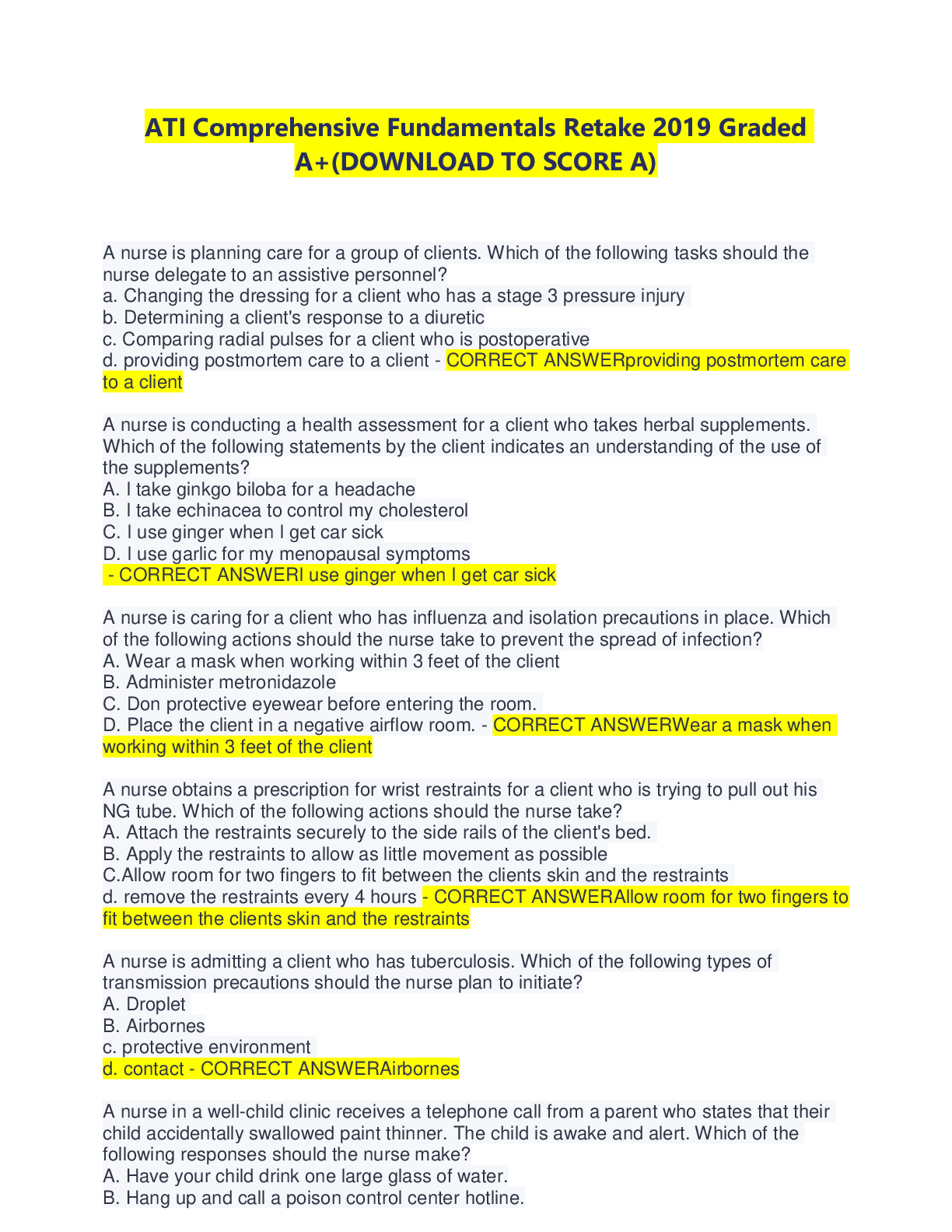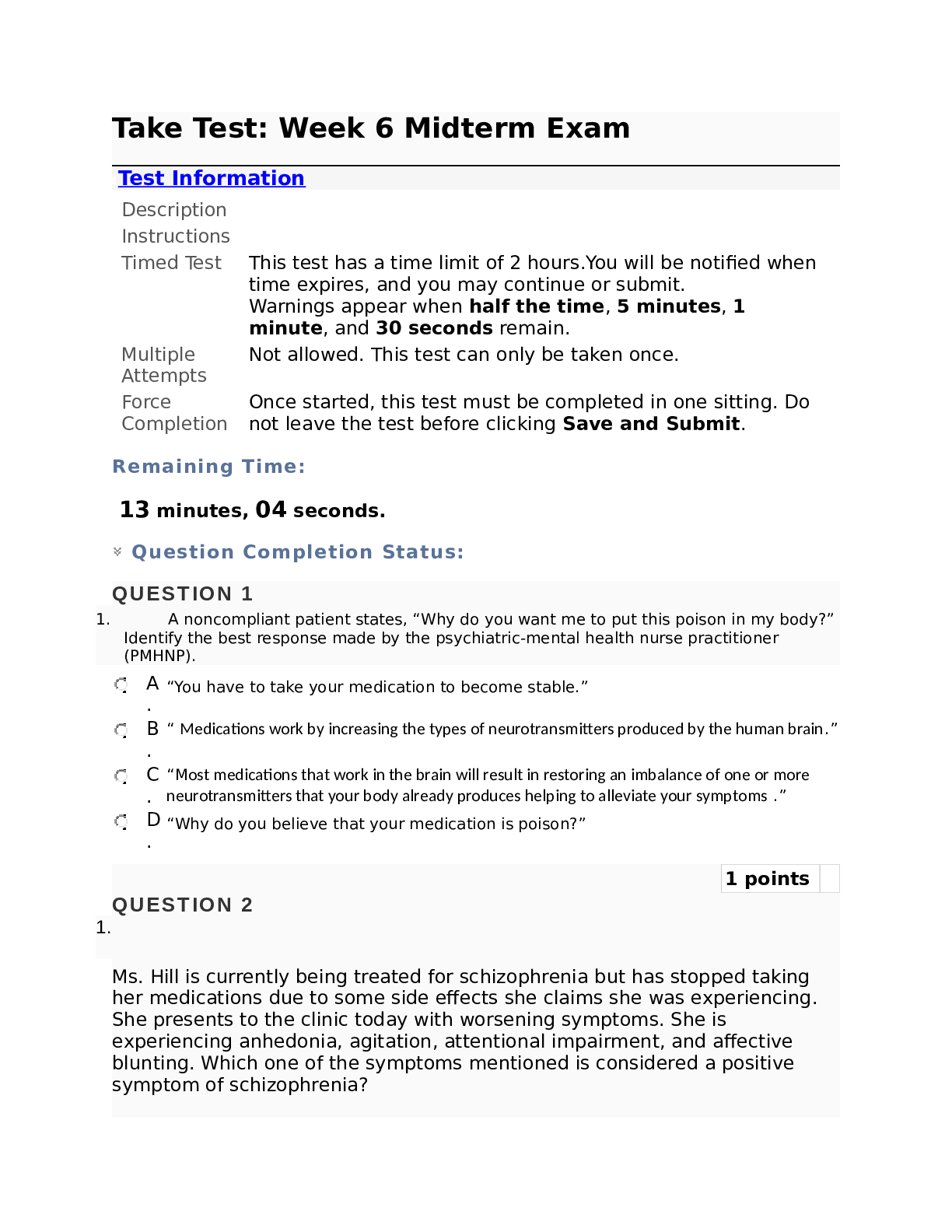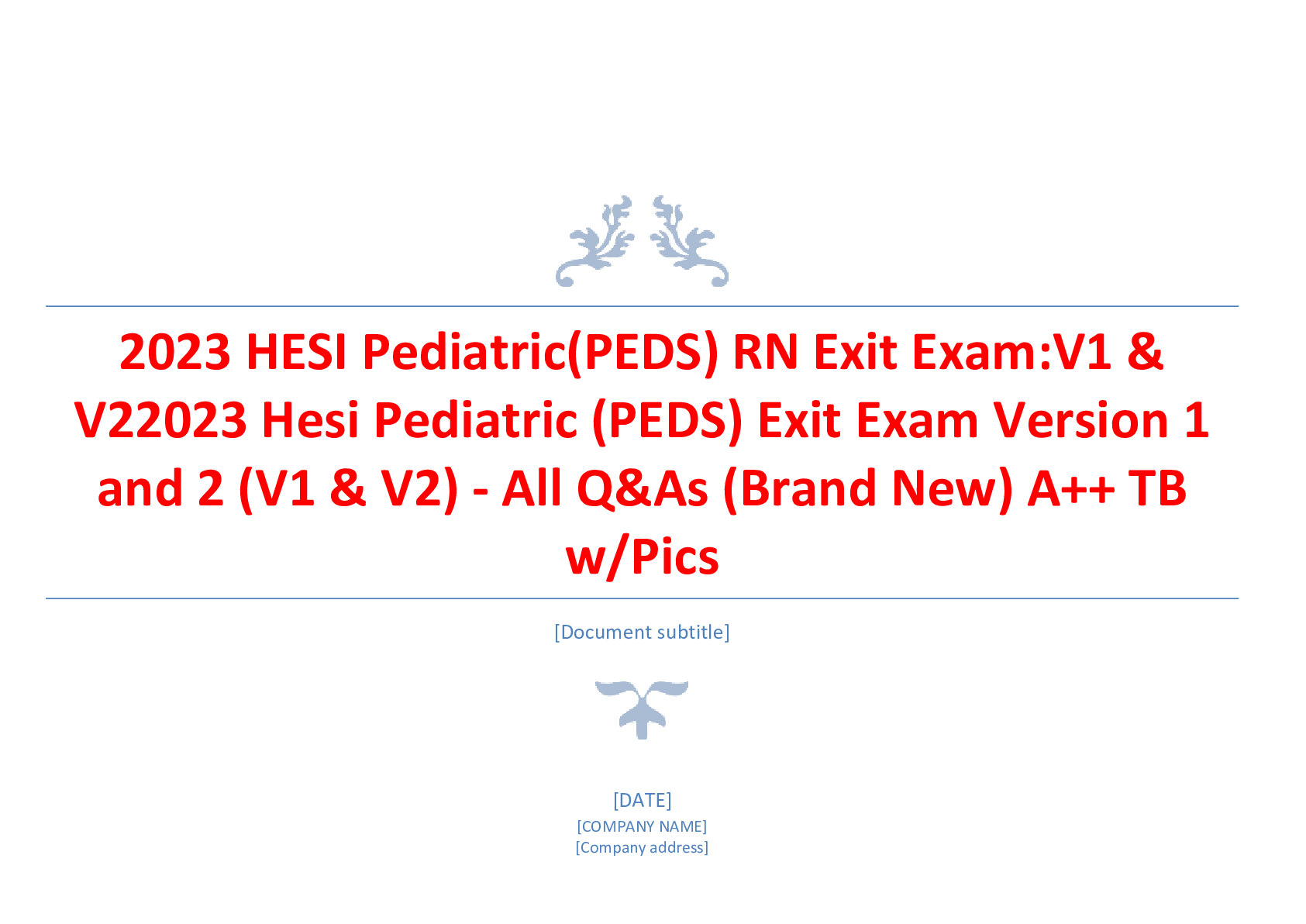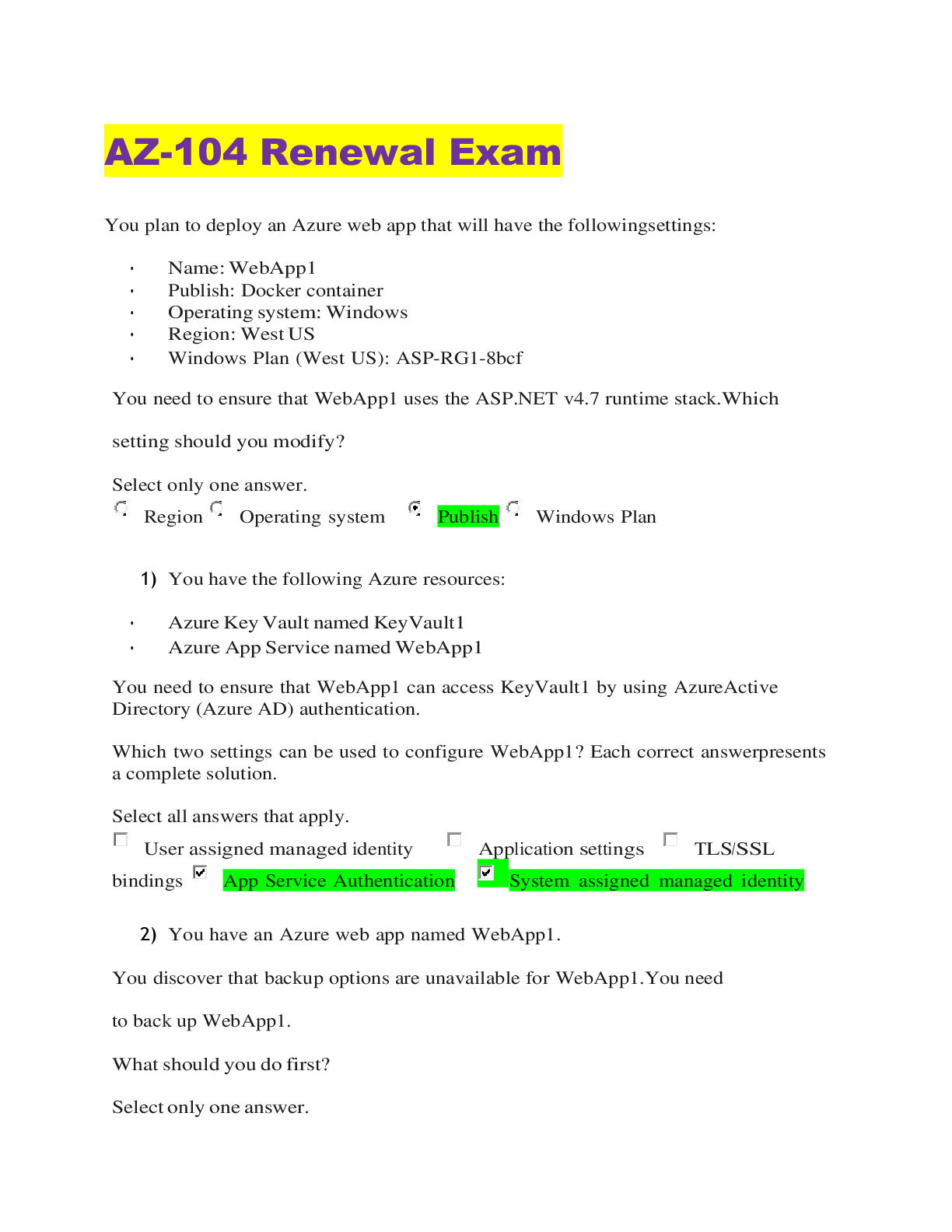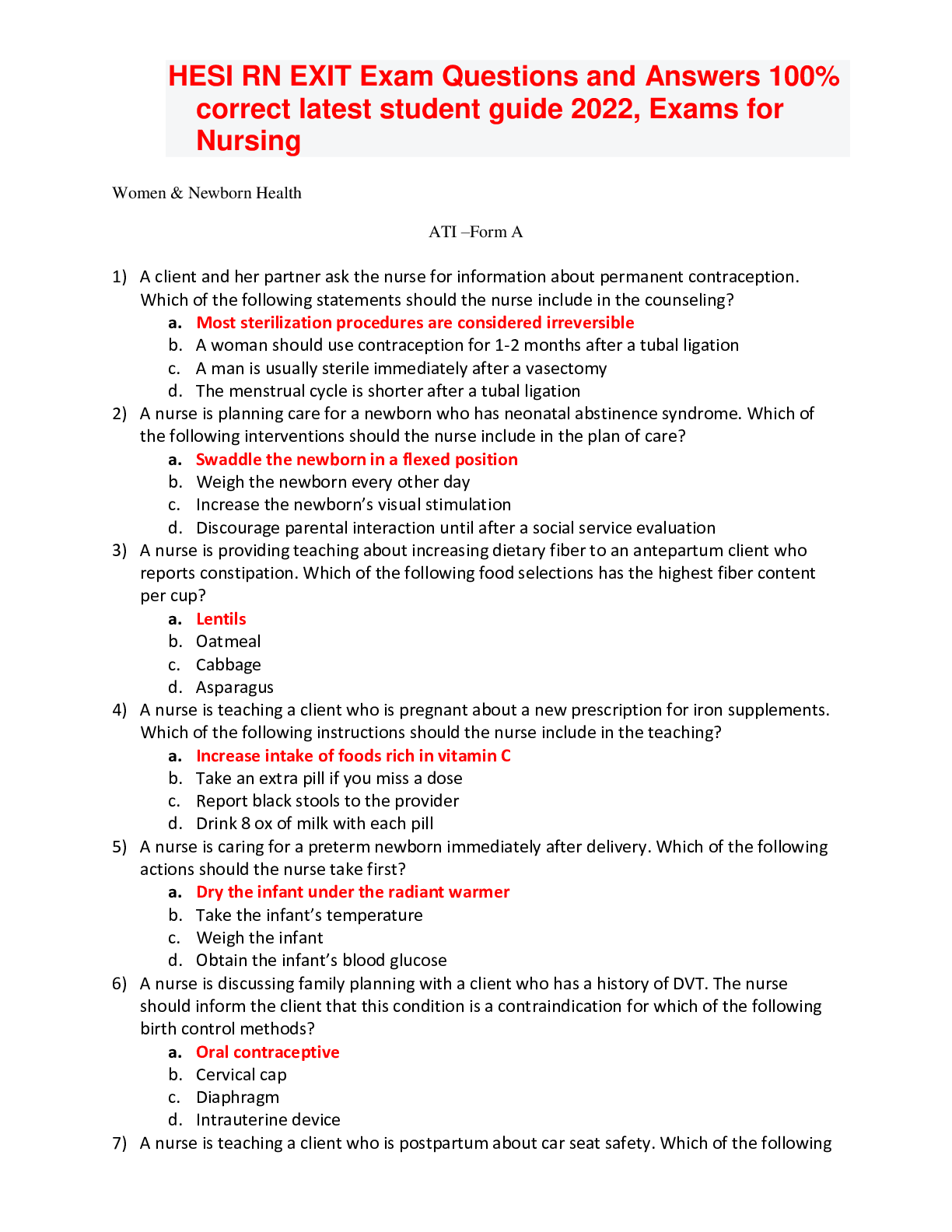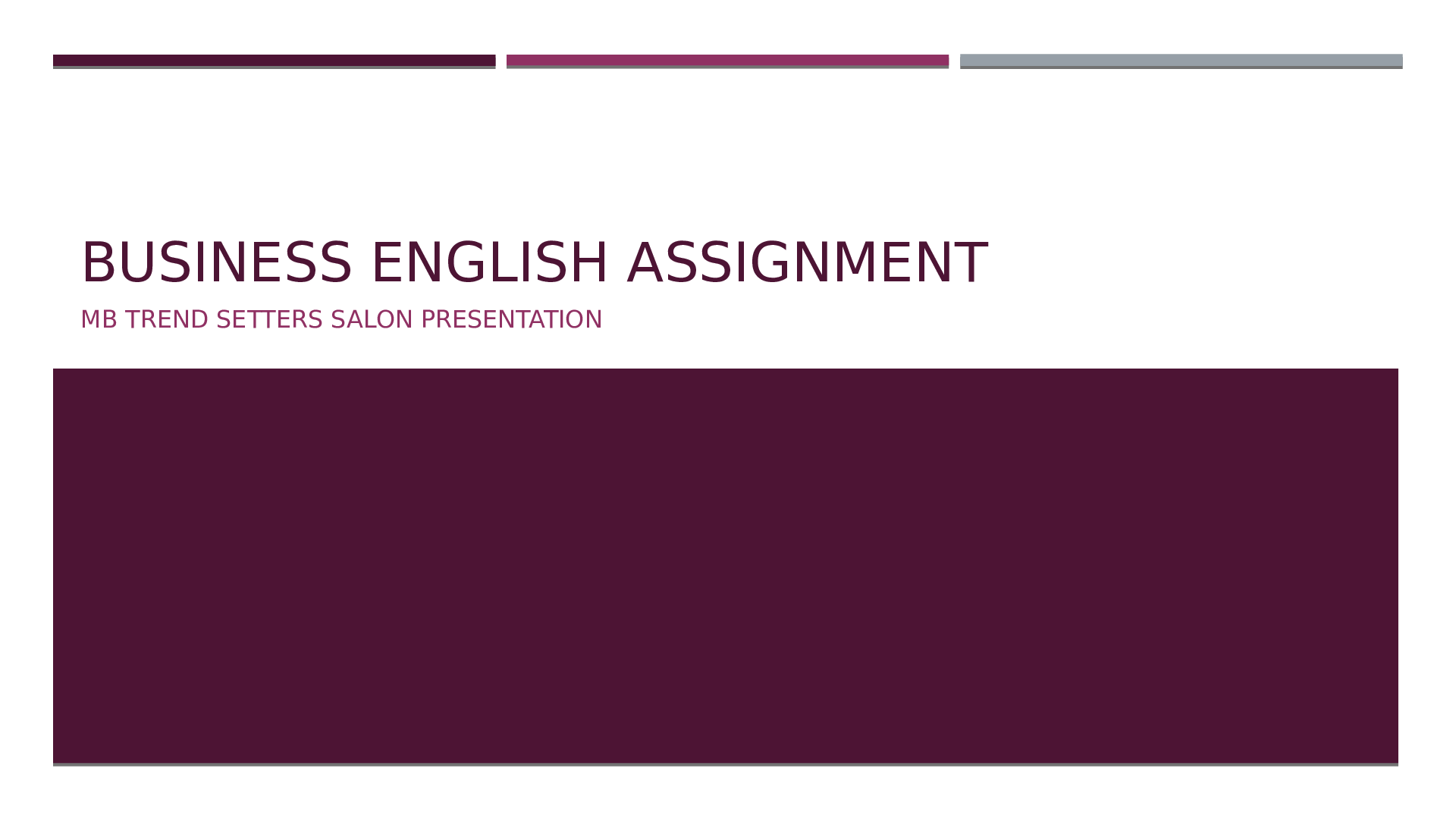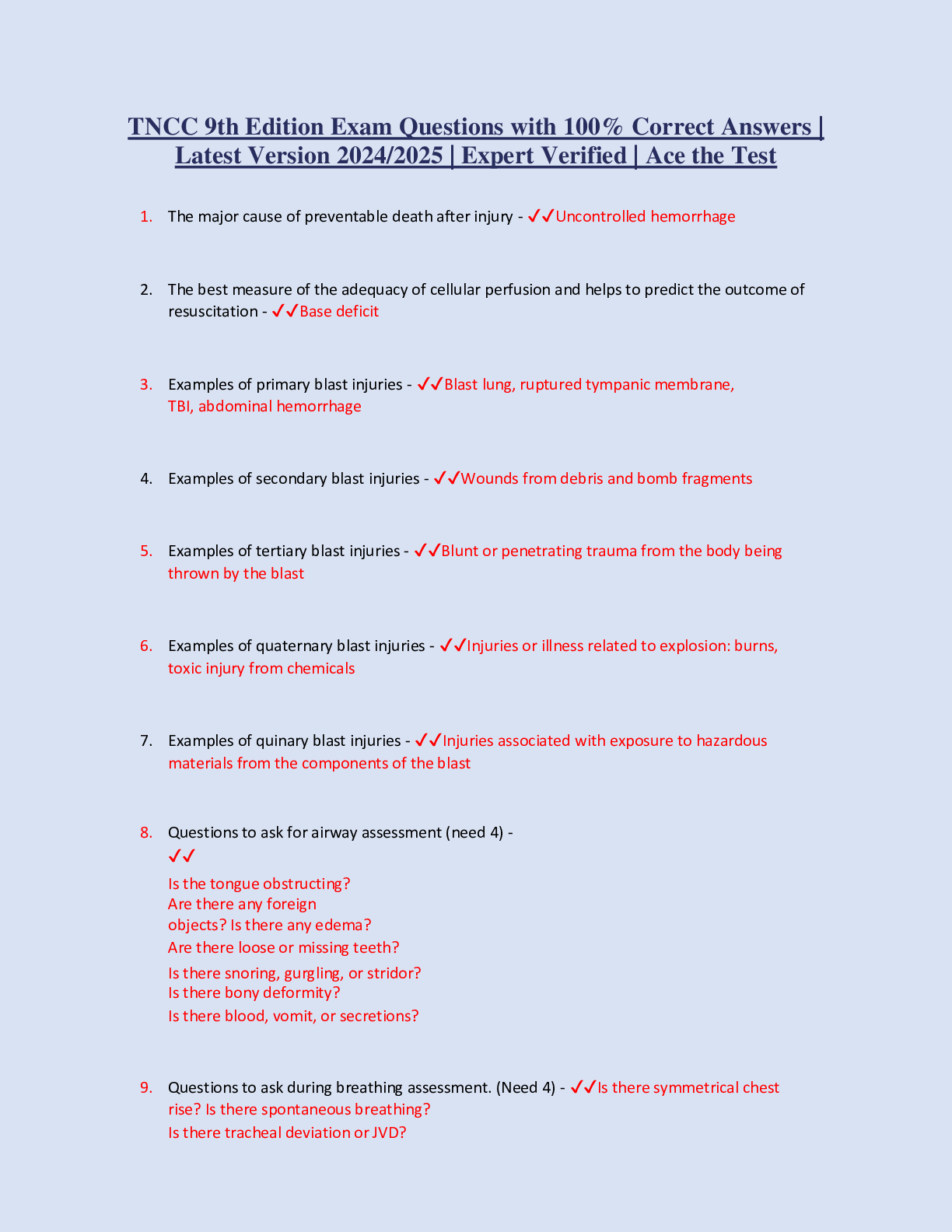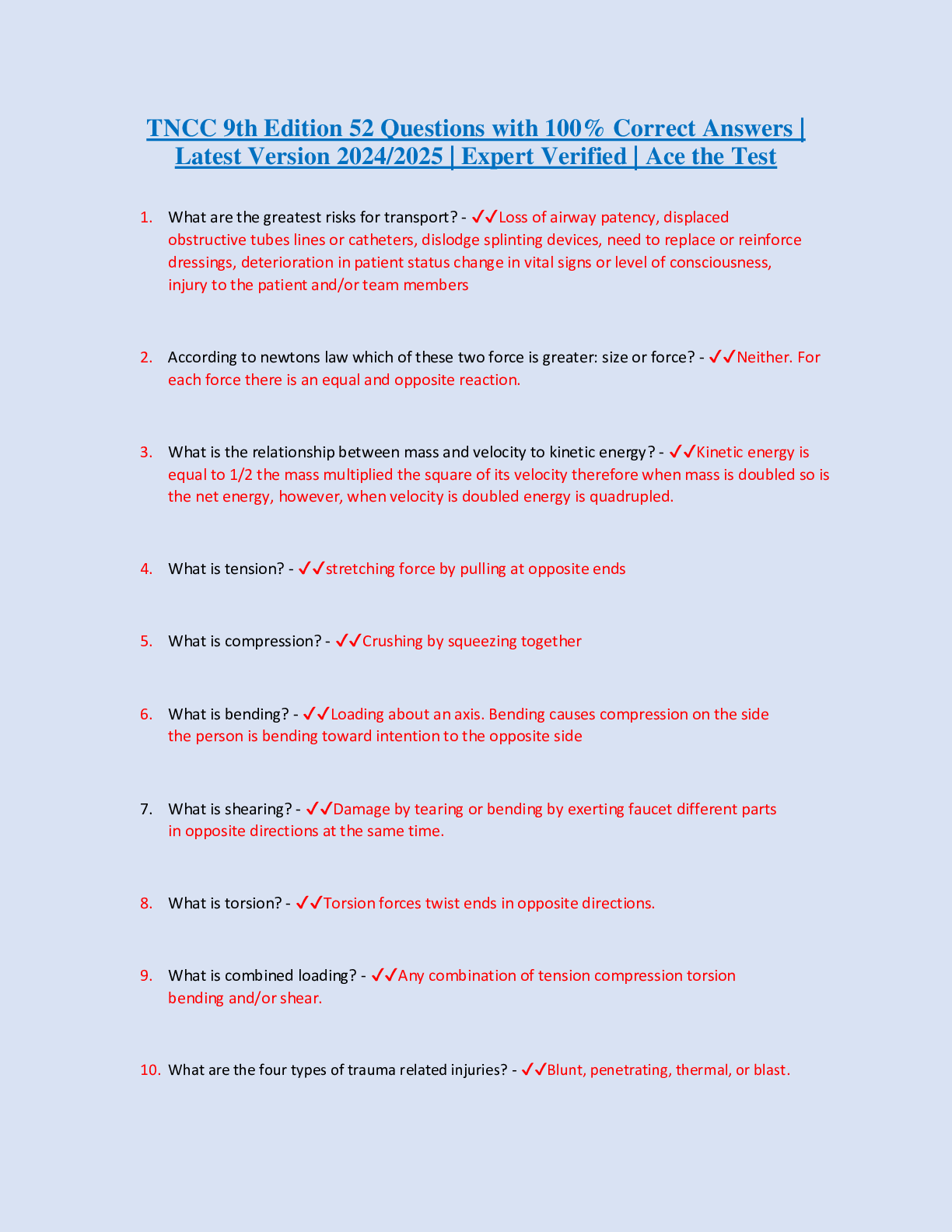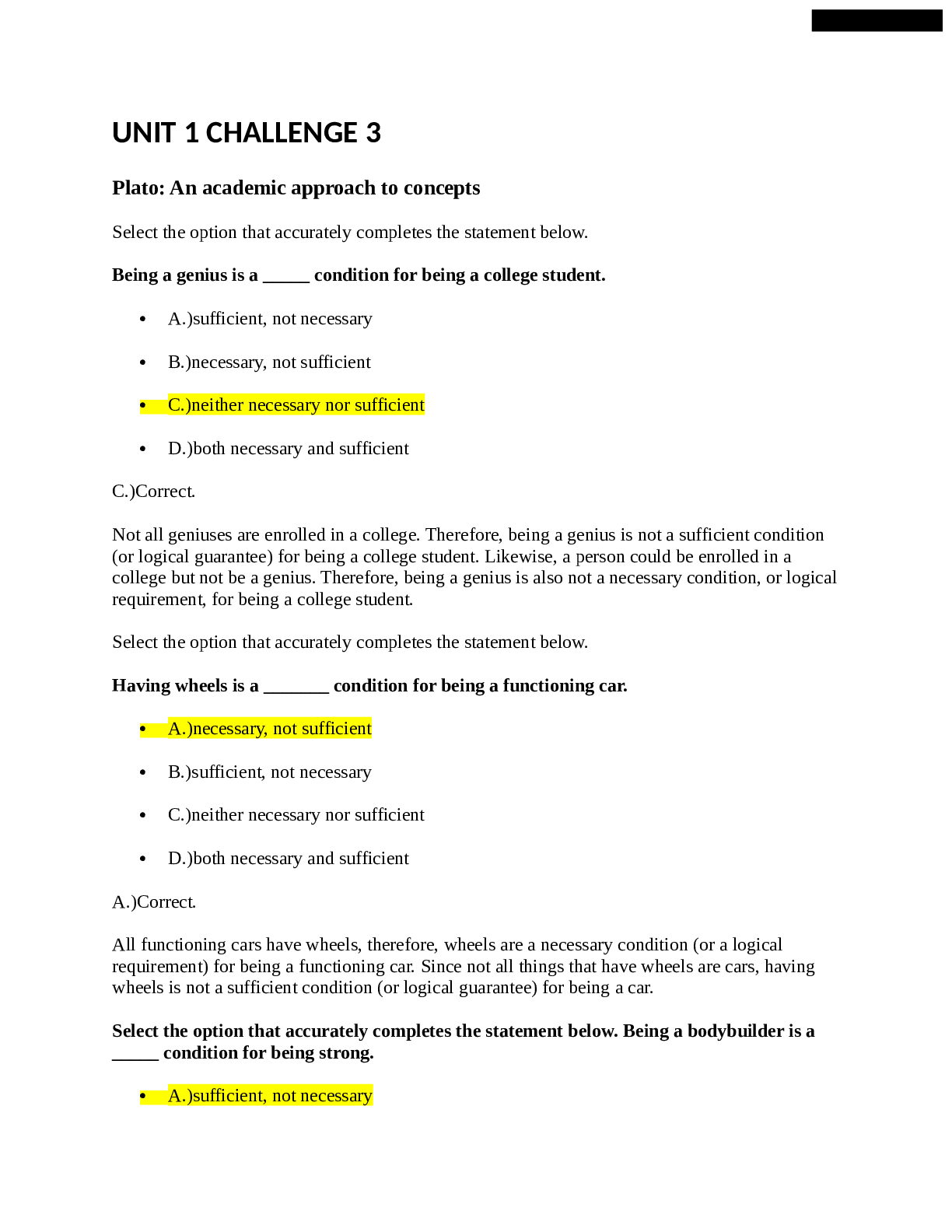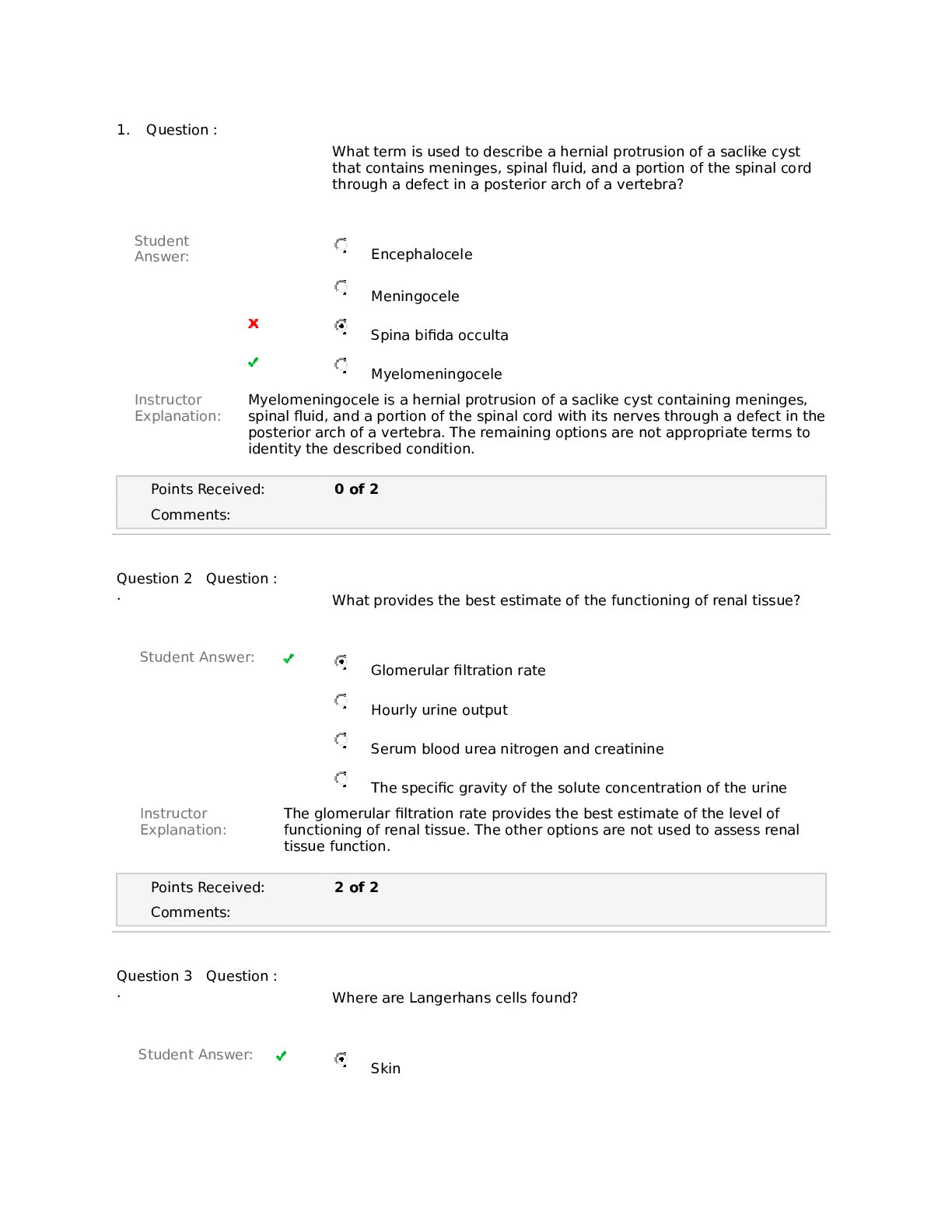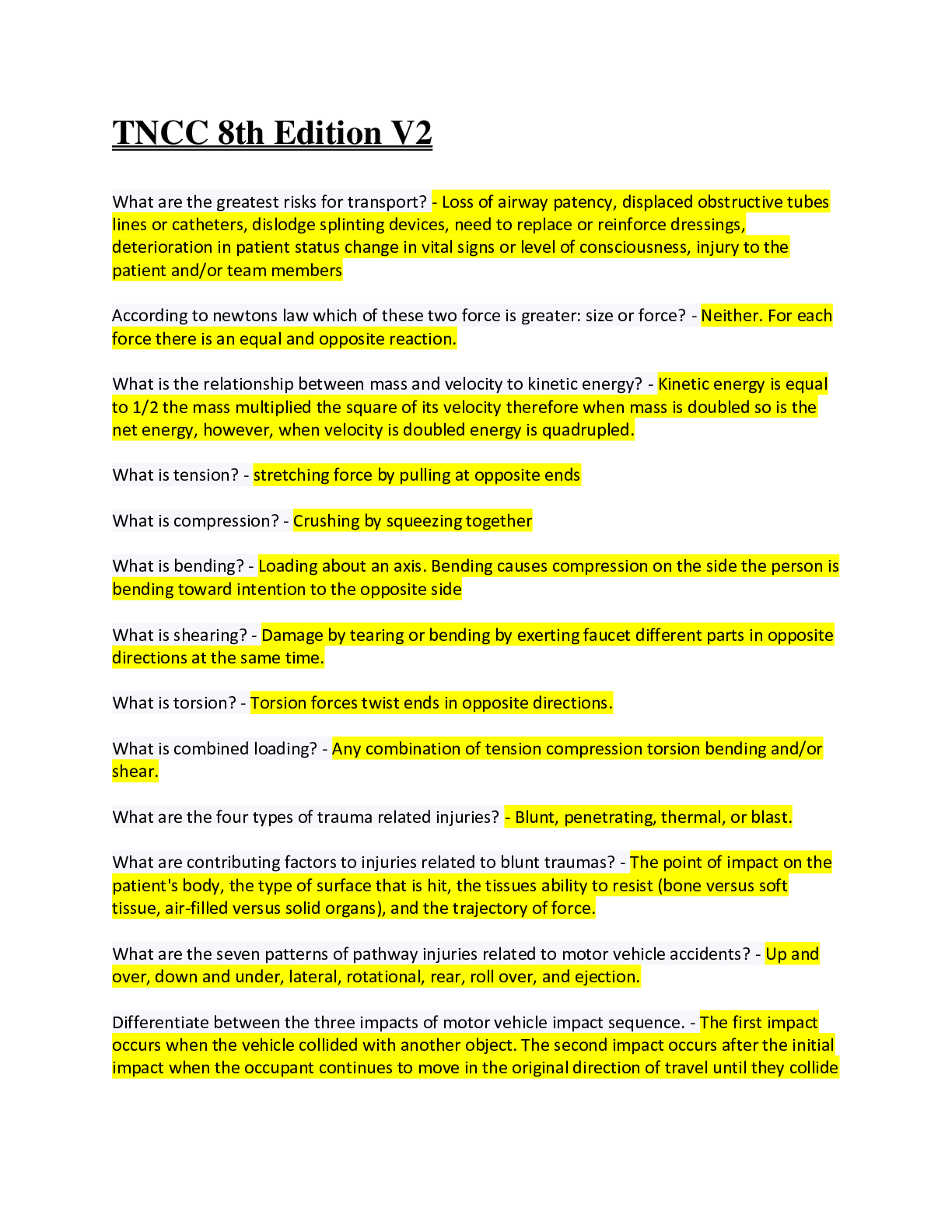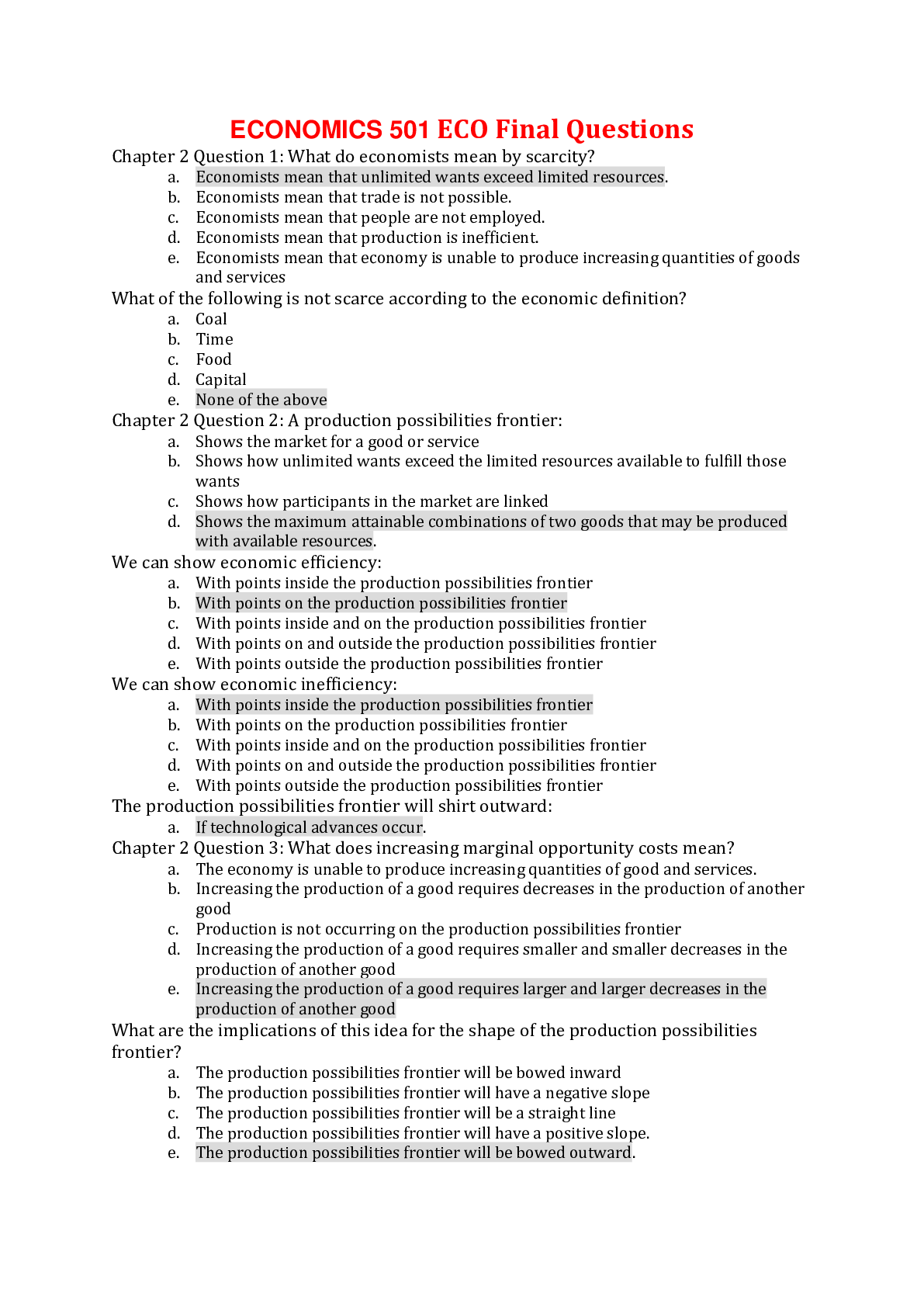Health Care > EXAM > Nursing 1 Final Exam (All)
Nursing 1 Final Exam
Document Content and Description Below
A client has arrived in the postoperative unit. What action by the circulating nurse takes priority? a. Assessing fluid and blood output b. Checking the surgical dressings c. Ensuring the client is... warm d. Participating in hand-off report - CORRECT ANSWERANS: D Hand-offs are a critical time in client care, and poor communication during this time can lead to serious errors. The postoperative nurse and circulating nurse participate in hand-off report as the priority. Assessing fluid losses and dressings can be done together as part of the report. Ensuring the client is warm is a lower priority. The postanesthesia care unit (PACU) charge nurse notes vital signs on four postoperative clients. Which client should the nurse assess first? a. Client with a blood pressure of 100/50 mm Hg b. Client with a pulse of 118 beats/min c. Client with a respiratory rate of 6 breaths/min d. Client with a temperature of 96° F (35.6° C) - CORRECT ANSWERANS: C The respiratory rate is the most critical vital sign for any client who has undergone general anesthesia or moderate sedation, or has received opioid analgesia. This respiratory rate is too low and indicates respiratory depression. The nurse should assess this client first. A blood pressure of 100/50 mm Hg is slightly low and may be within that client's baseline. A pulse of 118 beats/min is slightly fast, which could be due to several causes, including pain and anxiety. A temperature of 96° F is slightly low and the client needs to be warmed. But none of these other vital signs take priority over the respiratory rate. A postoperative nurse is caring for a client whose oxygen saturation dropped from 98% to 95%. What action by the nurse is most appropriate? a. Assess other indicators of oxygenation. b. Call the Rapid Response Team. c. Notify the anesthesia provider. d. Prepare to intubate the client. - CORRECT ANSWERANS: A If a postoperative client's oxygen saturation (SaO2) drops below 95% (or the client's baseline), the nurse should notify the anesthesia provider. If the SaO2 drops by 10% or more, the nurse should call the Rapid Response Team. Since this is approximately a 3% drop, the nurse should further assess the client. Intubation (if the client is not intubated already) is not warranted. Ten hours after surgery, a postoperative client reports that the antiembolism stockings and sequential compression devices itch and are too hot. The client asks the nurse to remove them. What response by the nurse is best? a. "Let me call the surgeon to see if you really need them." b. "No, you have to use those for 24 hours after surgery." c. "OK, we can remove them since you are stable now." d. "To prevent blood clots you need them a few more hours." - CORRECT ANSWERANS: D According to the Surgical Care Improvement Project (SCIP), any prophylactic measures to prevent thromboembolic events during surgery are continued for 24 hours afterward. The nurse should explain this to the client. Calling the surgeon is not warranted. Simply telling the client he or she has to wear the hose and compression devices does not educate the client. The nurse should not remove the devices. A client had a surgical procedure with spinal anesthesia. The nurse raises the head of the client's bed. The client's blood pressure changes from 122/78 mm Hg to 102/50 mm Hg. What action by the nurse is best? a. Call the Rapid Response Team. b. Increase the IV fluid rate. c. Lower the head of the bed. d. Nothing; this is expected. - CORRECT ANSWERANS: C A client who had epidural or spinal anesthesia may become hypotensive when the head of the bed is raised. If this occurs, the nurse should lower the head of the bed to its original position. The Rapid Response Team is not needed, nor is an increase in IV rate. A postoperative client vomited. After cleaning and comforting the client, which action by the nurse is most important? a. Allow the client to rest. b. Auscultate lung sounds. c. Document the episode. d. Encourage the client to eat dry toast. - CORRECT ANSWERANS: B Vomiting after surgery has several complications, including aspiration. The nurse should listen to the client's lung sounds. The client should be allowed to rest after an assessment. Documenting is important, but the nurse needs to be able to document fully, including an assessment. The client should not eat until nausea has subsided. A postoperative client has just been admitted to the postanesthesia care unit (PACU). What assessment by the PACU nurse takes priority? a. Airway b. Bleeding c. Breathing d. Cardiac rhythm - CORRECT ANSWERANS: A Assessing the airway always takes priority, followed by breathing and circulation. Bleeding is part of the circulation assessment, as is cardiac rhythm. A postoperative client has respiratory depression after receiving midazolam (Versed) for sedation. Which IV-push medication and dose does the nurse prepare to administer? a. Flumazenil (Romazicon) 0.2 to 1 mg b. Flumazenil (Romazicon) 2 to 10 mg c. Naloxone (Narcan) 0.4 to 2 mg d. Naloxone (Narcan) 4 to 20 mg - CORRECT ANSWERANS: A Flumazenil is a benzodiazepine antagonist and would be the correct drug to use in this situation. The correct dose is 0.2 to 1 mg. Naloxone is an opioid antagonist. A nurse is caring for a postoperative client who reports discomfort, but denies serious pain and does not want medication. What action by the nurse is best to promote comfort? a. Assess the client's pain on a 0-to-10 scale. b. Assist the client into a position of comfort. c. Have the client sit up in a recliner. d. Tell the client when pain medication is due. - CORRECT ANSWERANS: B Several nonpharmacologic comfort measures can help postoperative clients with their pain, including distraction, music, massage, guided imagery, and positioning. The nurse should help this client into a position of comfort considering the surgical procedure and position of any tubes or drains. Assessing the client's pain is important but does not improve comfort. The client may be more uncomfortable in a recliner. Letting the client know when pain medication can be given next is important but does not improve comfort. A nurse is preparing a client for discharge after surgery. The client needs to change a large dressing and manage a drain at home. What instruction by the nurse is most important? a. "Be sure you keep all your postoperative appointments." b. "Call your surgeon if you have any questions at home." c. "Eat a diet high in protein, iron, zinc, and vitamin C." d. "Wash your hands before touching the drain or dressing." - CORRECT ANSWERANS: D All options are appropriate for the client being discharged after surgery. However, for this client who is changing a dressing and managing a drain, infection control is the priority. The nurse should instruct the client to wash hands often, including before and after touching the dressing or drain. An older adult has been transferred to the postoperative inpatient unit after surgery. The family is concerned that the client is not waking up quickly and states "She needs to get back to her old self!" What response by the nurse is best? a. "Everyone comes out of surgery differently." b. "Let's just give her some more time, okay?" c. "She may have had a stroke during surgery." d. "Sometimes older people take longer to wake up." - CORRECT ANSWERANS: D Due to age-related changes, it may take longer for an older adult to metabolize anesthetic agents and pain medications, making it appear that they are taking too long to wake up and return to their normal baseline cognitive status. The nurse should educate the family on this possibility. While everyone does react differently, this does not give the family any objective information. Saying "Let's just give her more time, okay?" sounds patronizing and again does not provide information. While an intraoperative stroke is a possibility, the nurse should concentrate on the more common occurrence of older clients taking longer to fully arouse and awake. A nurse answers a call light on the postoperative nursing unit. The client states there was a sudden gush of blood from the incision, and the nurse sees a blood spot on the sheet. What action should the nurse take first? a. Assess the client's blood pressure. b. Perform hand hygiene and apply gloves. c. Reinforce the dressing with a clean one. d. Remove the dressing to assess the wound. - CORRECT ANSWERANS: B Prior to assessing or treating the drainage from the wound, the nurse performs hand hygiene and dons gloves to protect both the client and nurse from infection. A client on the postoperative nursing unit has a blood pressure of 156/98 mm Hg, pulse 140 beats/min, and respirations of 24 breaths/min. The client denies pain, has normal hemoglobin, hematocrit, and oxygen saturation, and shows no signs of infection. What should the nurse assess next? a. Cognitive status b. Family stress c. Nutrition status d. Psychosocial status - CORRECT ANSWERANS: D After ensuring the client's physiologic status is stable, these manifestations should lead the nurse to assess the client's psychosocial status. Anxiety especially can be demonstrated with elevations in vital signs. Cognitive and nutrition status are not related. Family stress is a component of psychosocial status. A registered nurse (RN) is watching a nursing student change a dressing and perform care around a Penrose drain. What action by the student warrants intervention by the RN? a. Cleaning around the drain per agency protocol b. Placing a new sterile gauze under the drain c. Securing the drain's safety pin to the sheets d. Using sterile technique to empty the drain - CORRECT ANSWERANS: C The safety pin that prevents the drain from slipping back into the client's body should be pinned to the client's gown, not the bedding. Pinning it to the sheets will cause it to pull out when the client turns. The other actions are appropriate. 1. A nurse orienting to the postoperative area learns which principles about the postoperative period? (Select all that apply.) a. All phases require the client to be in the hospital. b. Phase I care may last for several days in some clients. c. Phase I requires intensive care unit monitoring. d. Phase II ends when the client is stable and awake. e. Vital signs may be taken only once a day in phase III. - CORRECT ANSWERANS: B, D, E There are three phases of postoperative care. Phase I is the most intense, with clients coming right from surgery until they are completely awake and hemodynamically stable. This may take hours or days and can occur in the intensive care unit or the postoperative care unit. Phase II ends when the client is at a presurgical level of consciousness and baseline oxygen saturation, and vital signs are stable. Phase III involves the extended care environment and may continue at home or in an extended care facility if needed. A postanesthesia care unit (PACU) nurse is assessing a postoperative client with a nasogastric (NG) tube. What laboratory values would warrant intervention by the nurse? (Select all that apply.) a. Blood glucose: 120 mg/dL b. Hemoglobin: 7.8 mg/dL c. pH: 7.68 d. Potassium: 2.9 mEq/L e. Sodium: 142 mEq/L - CORRECT ANSWERANS: B, C, D Fluid and electrolyte balance are assessed carefully in the postoperative client because many imbalances can occur. The low hemoglobin may be from blood loss in surgery. The higher pH level indicates alkalosis, possibly from losses through the NG tube. The potassium is very low. The blood glucose is within normal limits for a postsurgical client who has been fasting. The sodium level is normal. A nurse is admitting an older client for surgery to the inpatient surgical unit. The client relates a prior history of acute confusion after a pre [Show More]
Last updated: 1 year ago
Preview 1 out of 25 pages
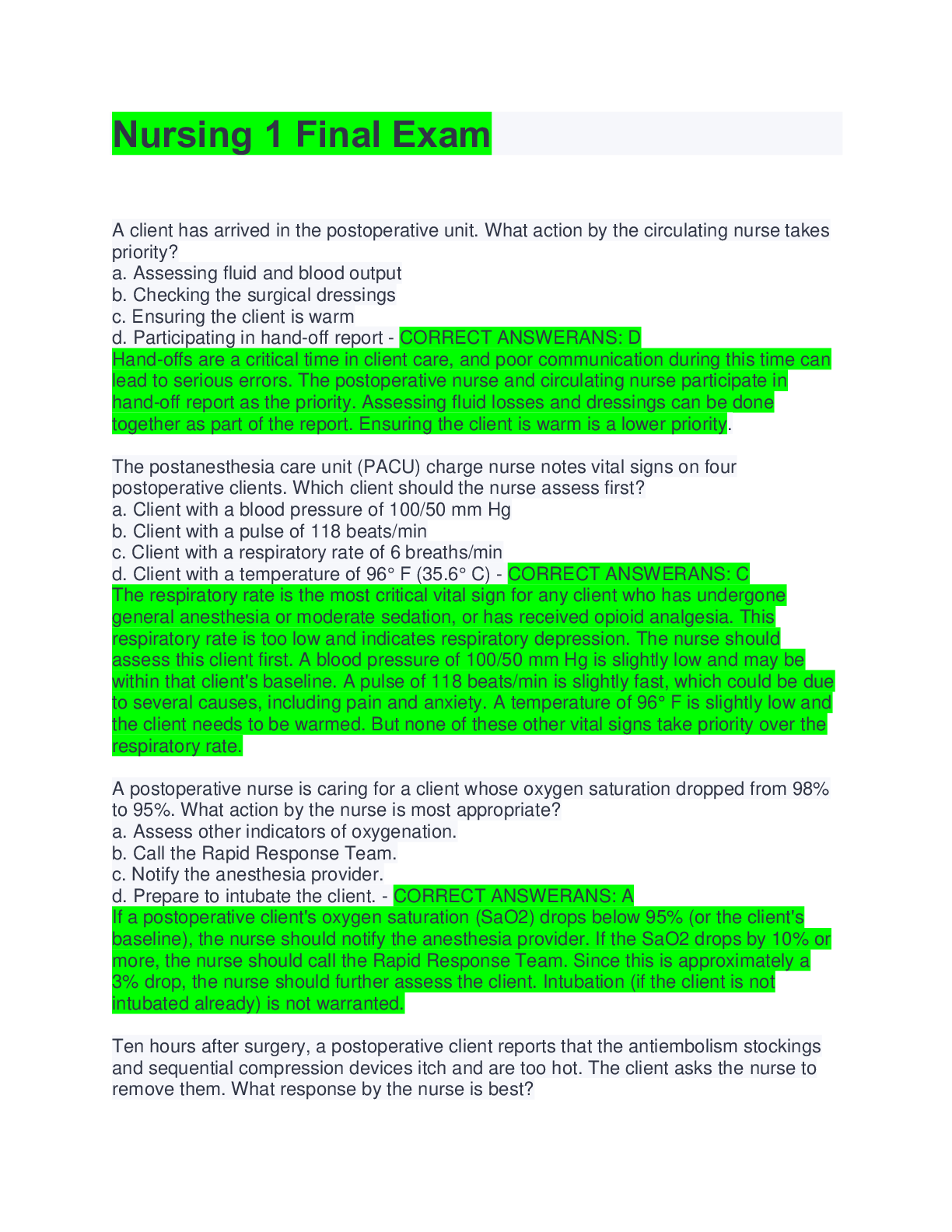
Reviews( 0 )
Document information
Connected school, study & course
About the document
Uploaded On
Aug 11, 2022
Number of pages
25
Written in
Additional information
This document has been written for:
Uploaded
Aug 11, 2022
Downloads
0
Views
25

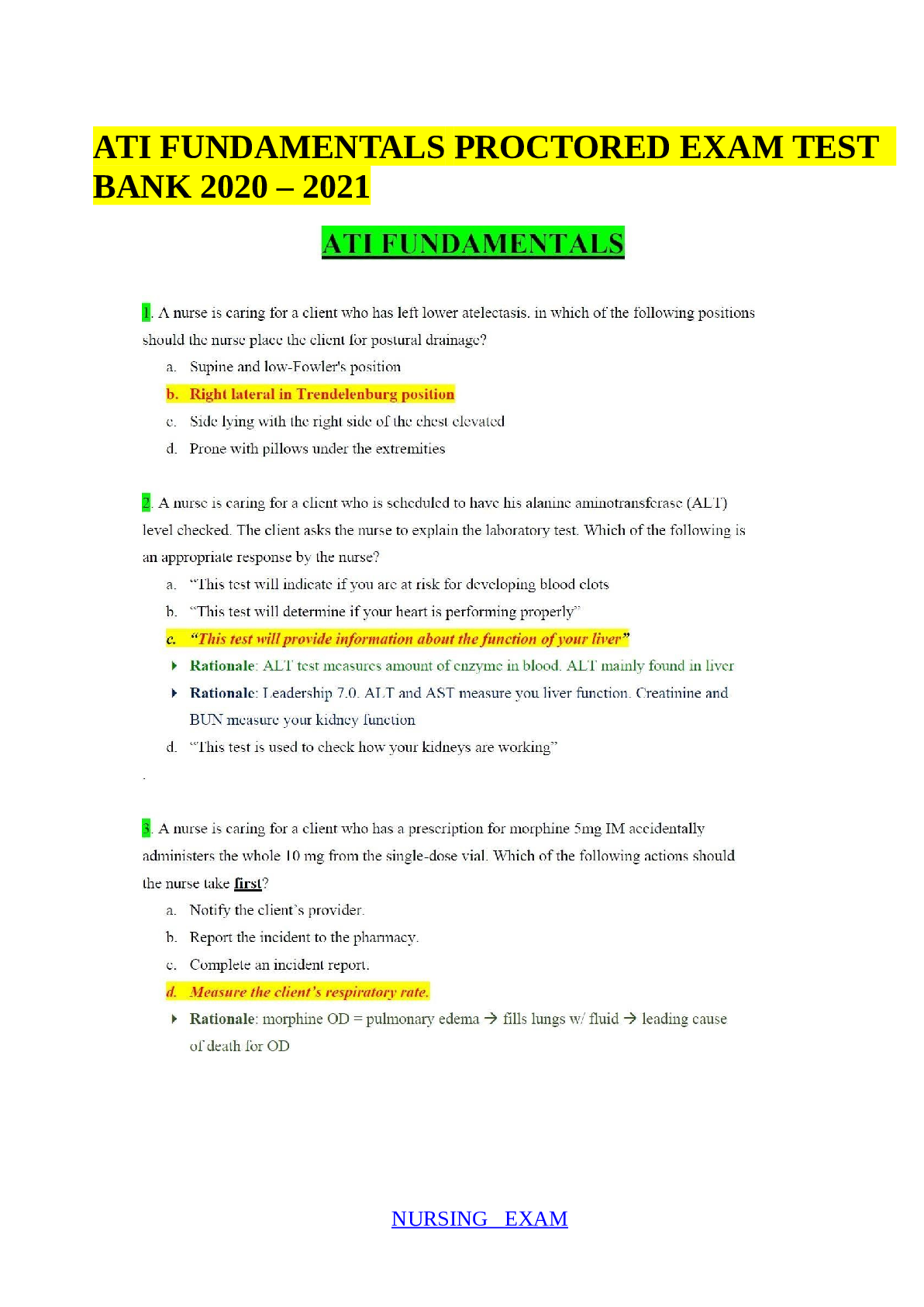

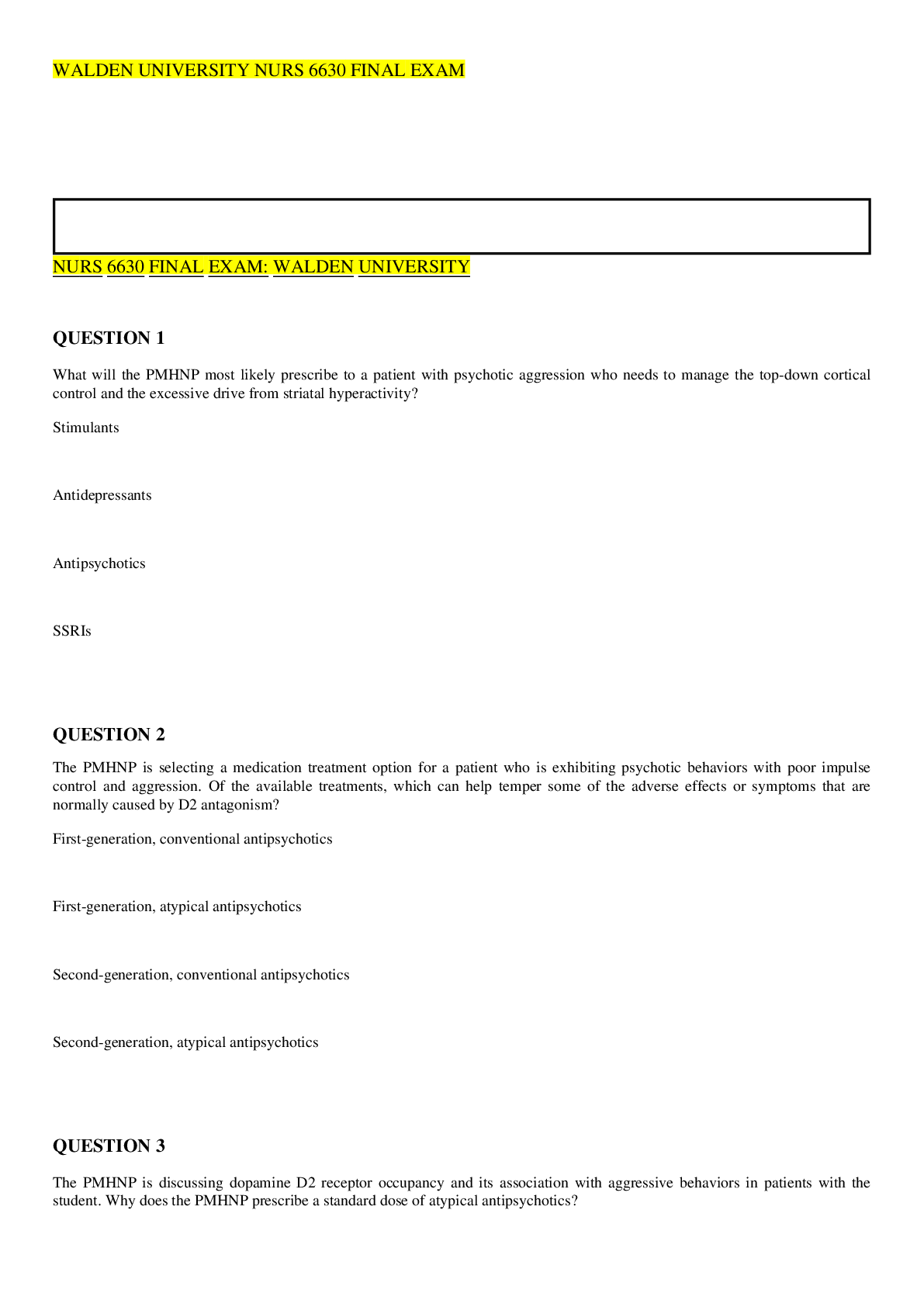
 (1).png)
